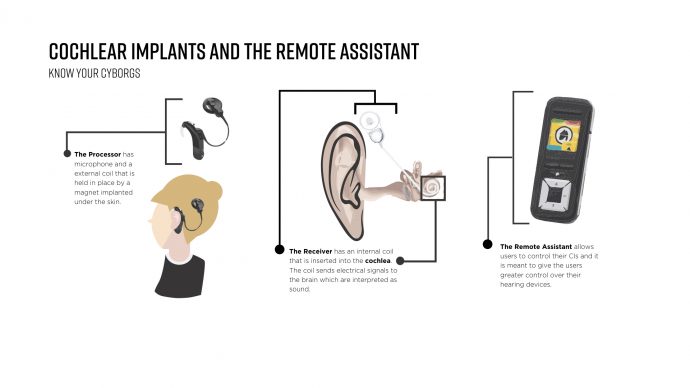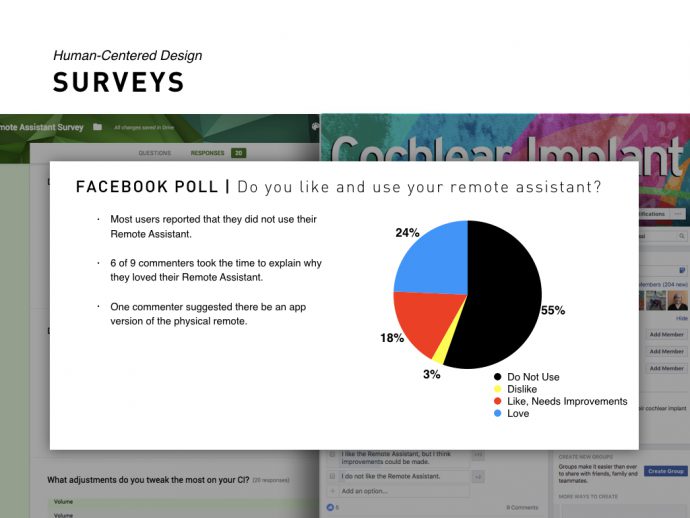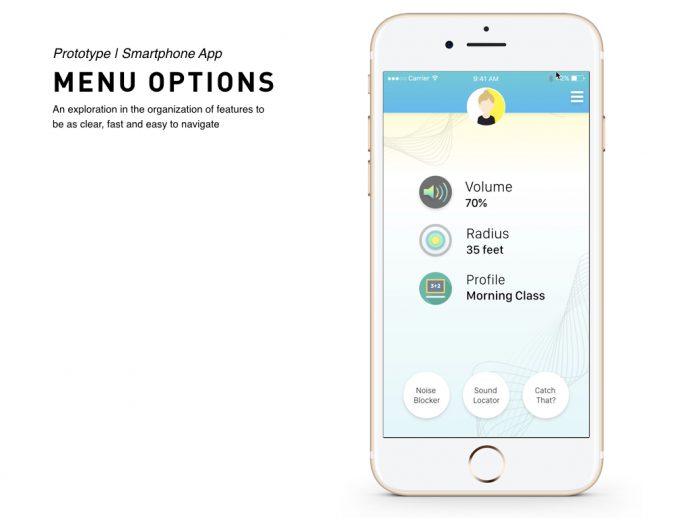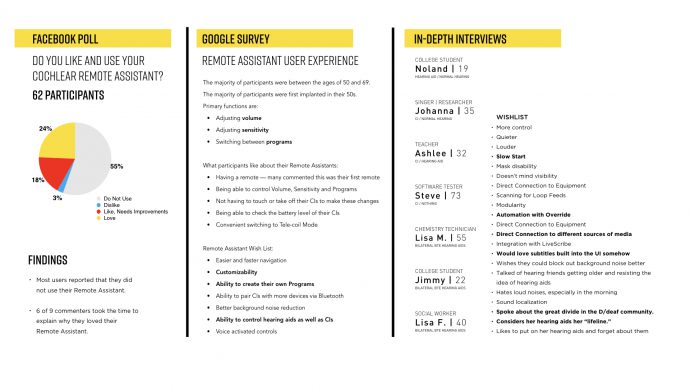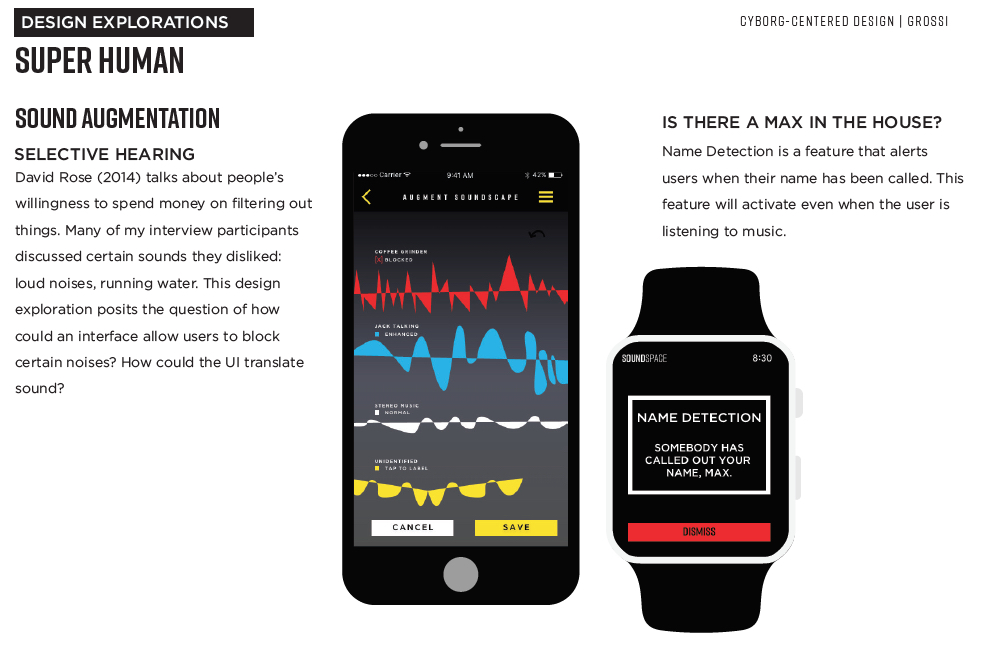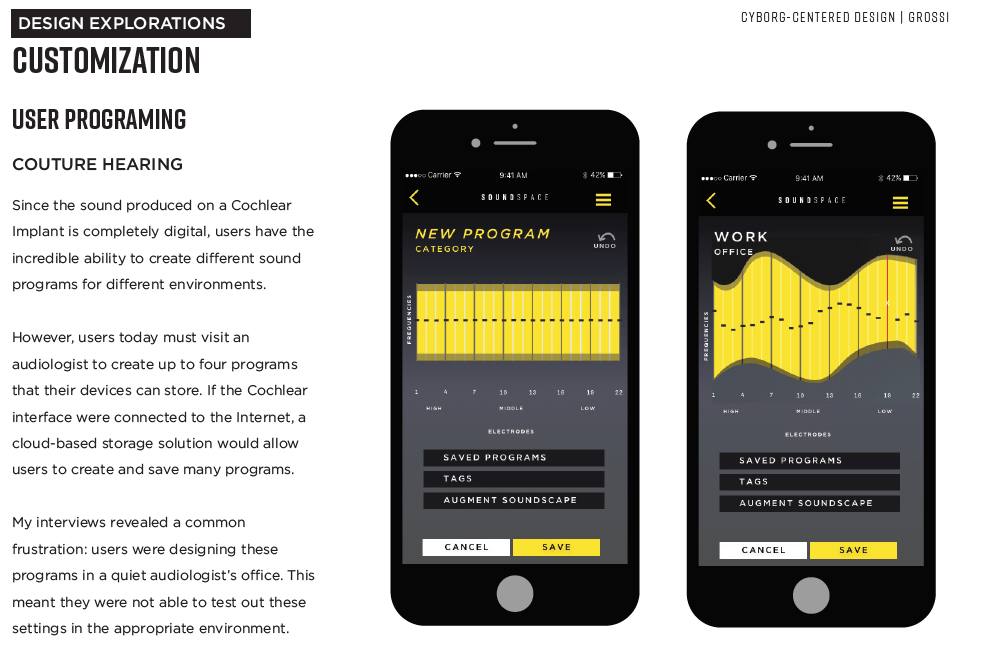Cyborg-Centered Design: A User Interface for Cochlear Implants
Master of Graphic Design Thesis
NCSU College of Design
May 10, 2017
Related Links:
BACKGROUND
The Cochlear Implant (CI) is a digital device that replaces the function of a damaged inner ear in people with severe to profound hearing loss. The Cochlear Implant is made up of two parts: an external processor that sits behind the user’s ear and a receiver with a coil that is surgically implanted in the user’s cochlea. The designs in this investigation center on the Nucleus 6, a CI model offered by the company, Cochlear Americas. This has an option for a Remote Assistant, a small, handheld device that allows users to adjust settings wirelessly. It is meant to give users greater control. Instead, users in my research report that its interface is difficult and time-consuming to operate.
CHALLENGE
The current UI (User Interface) of the Cochlear Implant Remote uses a linear navigation system that is difficult for users to learn and operate.
MISSION
Apply User-Centered Design to design a customizable, contextual interface for CI users that learns their habits and preferences.
ABSTRACT
Assistive Technology has been slow to adopt the highly regarded methods of Human-Centered Design (HCD), Participatory Design and Design Empathy. In the niche market of assistive tech, design decisions are not fueled by the need to attract and retain users. The Cochlear Implant (CI) is a biotechnological feat that provides deaf and hard-of-hearing recipients digital hearing. CIs act as the user’s connection to the hearing world, making the CI user a deeply invested stakeholder. Unlike mainstream devices such as laptops that provide consumers with a wide array of product choices, CI recipients are locked-in users of one company’s devices for life. Research gathered from literature confirmed that aspects of the current user interface do not adhere to HCD principles. For example, the CI interface’s linear navigation forces CI users to arduously wade through several options to change the volume. Online polls revealed that most users end up not using their remote assistants.
User-Sensitive Inclusive Design (USID) is a design research method devised by HCD researcher Alan Newell. It combines traditional design methods to foster a rich understanding of users, their experiences, and their emotions, resulting in design that responds to users’ distinct needs. Using USID as a method for the design of a more user-centered CI Interface, this study utilizes polls, surveys and interviews to create personas and corresponding user journey maps.
Design explorations range from the basic elements of usability in controls to possibilities in customizable, connected, contextual interface. Using David Rose’s concept of “Enchanted Objects” as a framework, this investigation also looks at how the Internet of Things (IoT) can connect and empower Cochlear Implant users. Mindful of the larger question of what it means to design for disability, these visual explorations seek avenues in which designers can grant assistive device users a stronger role in the design process and looks into how networked assistive technology can help foster communication between users and designers. While these investigations center on the design of a UI for Cochlear Implant recipients, the results of this research benefit all designers who are creating for users with specific needs.

